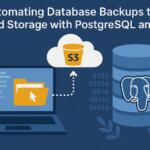AWS Glue is a fully managed ETL (Extract, Transform, Load) service that allows users to move and transform data stored in Amazon S3, Redshift, and other data sources into the necessary format for analytics. It is particularly useful for automating the processes of data transformation and preparation for machine learning, analytics, and business intelligence.
Setting Up AWS Glue for Data Transformation
To begin using AWS Glue, the first step is to set up the AWS Glue environment. This involves creating the necessary components such as Glue Crawlers, Glue Jobs, and data catalogs. The Glue Crawler is used to scan your data sources, detect the structure, and create metadata tables that are stored in the Glue Data Catalog.
The AWS Glue Job is a script that executes the actual data transformation tasks. These scripts can be written in Python or Scala, and AWS Glue provides an environment for running these scripts with a serverless architecture.
Creating and Configuring a Glue Crawler
1. Navigate to the AWS Glue Console.
2. Choose the “Crawlers” section and click “Add Crawler”.
3. Define the data source, whether it’s Amazon S3, JDBC, or another supported data store.
4. Configure the output of the crawler to populate the Glue Data Catalog with tables for querying.
Building a Glue Job to Transform Data
Once the metadata tables are created, the next step is to create a Glue Job for transforming the data. Glue jobs are typically written in Python or Scala, leveraging the Apache Spark engine for distributed data processing.
Here’s an example of how to write a basic Glue job in Python to read data from an S3 bucket, perform transformations, and write the results back to S3:
import sys
import boto3
from awsglue.utils import getResolvedOptions
from awsglue.context import GlueContext
from pyspark.context import SparkContext
from awsglue.dynamicframe import DynamicFrame
args = getResolvedOptions(sys.argv, ['JOB_NAME'])
sc = SparkContext()
glueContext = GlueContext(sc)
spark = glueContext.spark_session
# Reading data from S3
input_data = glueContext.create_dynamic_frame.from_catalog(database = "my_database", table_name = "my_table")
# Performing transformations (e.g., renaming a column)
transformed_data = input_data.rename_field("old_column_name", "new_column_name")
# Writing transformed data back to S3
glueContext.write_dynamic_frame.from_options(transformed_data, connection_type = "s3", connection_options = {"path": "s3://my-bucket/output/"})
Optimizing AWS Glue Jobs
To ensure the best performance when processing large datasets, it’s important to optimize your Glue Jobs. Some key optimizations include:
- Partitioning data in S3 to reduce the amount of data scanned during transformations.
- Using pushdown predicates to filter data early in the ETL process.
- Utilizing the Glue DynamicFrame operations efficiently to handle schema evolution and complex data types.
Using AWS Glue for Data Catalog Integration
The AWS Glue Data Catalog plays a crucial role in managing metadata for your data sources. It stores information about your data, including its schema and location, making it easy to access and query with other AWS services like Athena, Redshift, or EMR. Integrating the Glue Data Catalog into your workflows allows for consistent metadata management and ensures compatibility across different analytics tools.
Conclusion
AWS Glue provides a powerful platform for transforming and processing cloud storage data. With its flexible job creation, integration with the Glue Data Catalog, and optimization features, AWS Glue simplifies the ETL process, enabling developers to handle large datasets efficiently and at scale.
We earn commissions using affiliate links.










